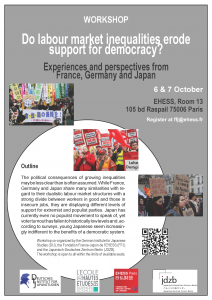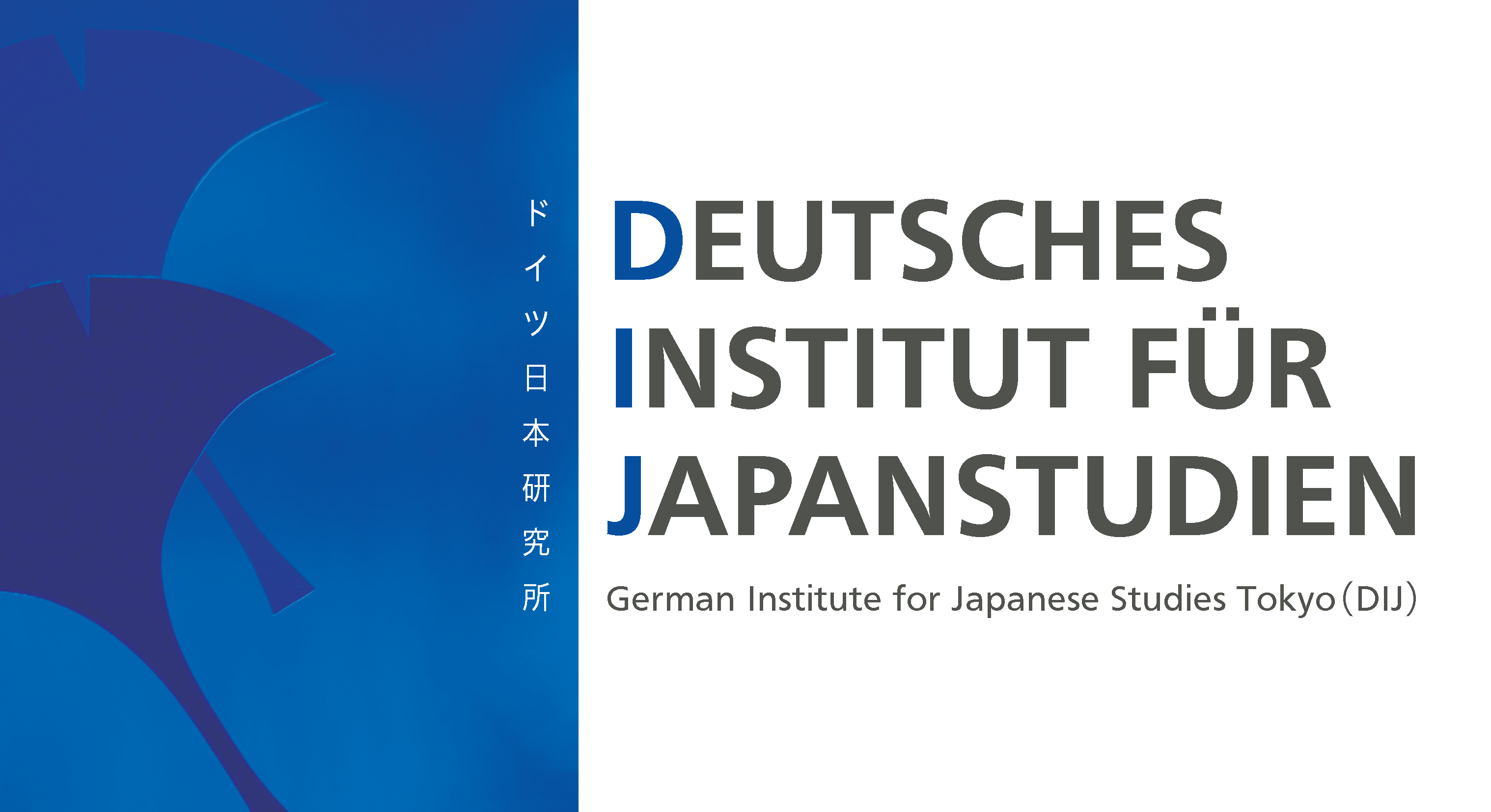Events and Activities
Outgrowing the “triple helix” – The effects of international cooperation on the emergence of Japanese regional high-tech innovation clusters
Regional economic disparities, rapid ageing, low GDP growth, and the increasing importance of science-based industries induced a major shift in Japanese innovation policy over the last decades. Regional innovation clusters with collaborative research between universities and surrounding companies at their core, promising radical high-tech novelties with the potential for start-ups, have become the target of recent policy efforts and subsidy programs.
Compared to “market-based” systems such as the Anglo-Saxon economies, Japan’s “coordinated capitalism” (e.g. Streeck, Yamamura 2003) is typically associated with institutional constraints on radical innovation, like a lack of venture capital or a rigid labor protection regime. This research demonstrates the onset of significant institutional changes in Japan’s innovation regime.
The transfer of knowledge between Germany and Japan in the late Meiji and early Taishō eras: A case study of Georg Würfel (1880-1936)

In the late Meiji era the system of hiring foreign contract workers (o-yatoi gaikokujin) to educate Japanese intellectuals came to an end. Instead of working at universities, foreign teachers were increasingly employed at university preparation schools (kōtō gakkō). In order to examine the German-Japanese transfer of knowledge in the late Meiji and the Taishō eras, this paper draws on an in-depth study of several German teachers living and working in Japan during this time. The research objective is to compare the situation of professors in Tokyo under the o-yatoi system to the situation of teachers at the new preparation schools.
This talk will focus on the example of Georg Würfel who came to Tokyo in 1906 as a missionary and stayed as a teacher in Sendai, Miyagi, until his death in 1936. While he is rarely ever mentioned by his contemporary fellow Germans in Japan in their writings, Würfel influenced several thousand Japanese students and he was often also their first contact with a foreigner.
Japan votes (again): A review of the Lower House election 2017

On October 22 Japan is heading to the polls for the third time in 5 years. The 2017 snap election has given candidates and parties little time to prepare and has made it difficult for observers to predict results as Japan’s party system seems once again in flux.
In his lecture Koichi Nakano, professor of political science at Sophia University, will provide an overview of key events and movements in the run-up to the election, the prospect for further developments in the party system and their impact on the issue of constitutional revision.
Chris Winkler, lecturer in Japanese politics at Hokkaido University, will offer some preliminary explanations of parties’ individual performances and what the election results mean for the Abe government’s agenda.
School’s out Forever – Examining Career Guidance and Transition Mechanisms at Japanese Senior High Schools

Irregular employment and average job turnover rates have been increasing for many years in Japan. At the same time, a shift from a credential society (gakureki shakai) to a learning capital society can be observed. According to Kariya (2010) this results in three challenges: (a) an increasing performance pressure on young people, (b) the emergence of a new dynamic of class cleavage and (c) a shift to a flexible labor regime. Once a defining characteristic of Japan’s credential society educational achievements no longer reliably translate into desirable occupational success (Tachibanaki 2006). Employment in unstable and low-pay jobs, reduced career mobility, and fragmented work biographies have so far often been explained with insufficient education (Honda 2004). However, this neglects the uneven distribution of critical factors for success in the job market, such as the educational opportunities schools offer and individual learning competencies.
Evolution and Transformations of Japan’s Multilateral Diplomacy

From a purely geopolitical point of view in international relations theory, Japan could focus on its bilateral relations with the United States to ensure its national security and neglect multilateral diplomacy. However, Japan shows a remarkably active behavior in multilateral arenas, such as the United Nations: as the second largest financial contributor to the United Nations regular budget, as the most frequently elected non-permanent member of the United Nations Security Council, and in its commitment to particular issues such as Human Security (Shin’yo 2017).
Since geopolitical reasoning cannot sufficiently explain Japan’s international actions and multilateral commitment, this research aims for a more eclectic approach by adopting a constructivist perspective. Taking into account recognition, identity, norms and other social factors contributes to a better understanding of Japanese multilateral diplomacy (Kratochwil 2011). The research project looks back at 60 years of Japanese UN membership. Of particular interest are the notions that are central to Japanese diplomacy and their interpretation by Japanese actors, constructing a certain image of Japan and its diplomacy.
Prolonging Youthfulness: An Investigation of the bimajo Phenomenon in Japan
For the past five, six years, bimajo (美魔女) has come into media attention in Japan. Bimajo are women in their 35 and above, who look much younger than their actual age. They put on nice make up, their hair is nicely arranged, and they are very fashionable, too. On top of that, they maintain their skin very well, hardly have wrinkles and age spots, and keep their body fit.
Bimajo is an extreme example of women who want to stay young. More generally, this research has observed that many Japanese women around the age of 40, regardless of their marital status and occupation, try to be young; not only by their appearance but they also try to make the way they speak, and tone of their voice appear younger. The presentation will also investigate the social expectations of being young towards Japanese women through textual analysis of media discourse as well as an ethnographic approach: interacting with Japanese women in their 30s and 40s.
Do labour market inequalities erode support for democracy? Experiences and perspectives from France, Germany and Japan

For decades, many policymakers and international organisations such as OECD and the IMF, have emphasised the need of structural, especially labour market reforms to improve competitiveness. While many arguments of this debate are still present today (e.g. in the 2017 French election campaign), it is now widely accepted that growing social inequalities have contributed to an increase in income inequality and that rising inequalities in the labour market could be a major factor behind feelings of political marginalisation and alienation, vote abstention, support for extremist and/or anti-establishment parties and growing distrust in parties and democratic institutions.
This workshop seeks to investigate links between labour market inequalities and falling support for and trust in democracy by bringing together scholars and experts from France, Germany and Japan.
Gemeinsame Bücherausstellung:
90-jähriges Gedenken an Akutagawa Ryūnosuke

Das Jahr 2017 markiert den 90. Todestag von Akutagawa Ryūnosuke, welcher als Japans herausragendster Autor der Taishō-Zeit angesehen wird.
Die International House of Japan Library, die Bibliothèque de la Maison franco-japonaise, und die Bibliothek des Deutschen Instituts für Japanstudien stellen Übersetzungen von Akutagawas Arbeiten und kritischen Studien aus.
Genießen Sie bei dieser Gelegenheit die zahlreichen Meisterwerke auf Englisch, Französisch und Deutsch.




 Open Access
Open Access
